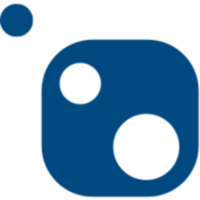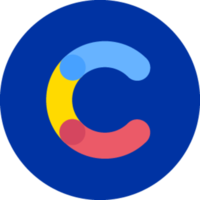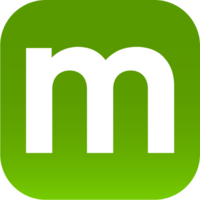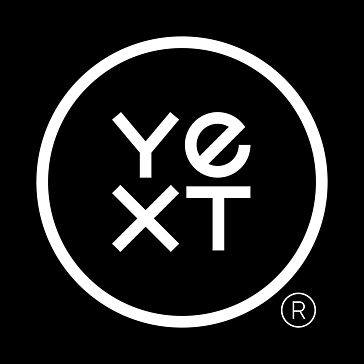Paul's review on dotCMS
What is dotCMS?
Launched as a hybrid CMS, dotCMS is a bit of a jack-of-all-trades, mixing the tech savvy of a headless CMS with the user-friendly bits of traditional CMS. It’s a hit with developers and marketers, helping businesses keep up with changing customer tastes and channel demands.
Built on solid Java tech, dotCMS offers a versatile platform for all sorts – web apps, knowledge bases, intranets, e-commerce, you name it. Its open-source nature is a big plus for big enterprises.
Who Uses dotCMS?
dotCMS is all about making life easier for different organizations when it comes to managing content. It’s great for creating, managing, and dishing out personalized content. With features that up agility, scalability, and security, dotCMS is a gem for teams that want the freedom to tweak and update without waiting on IT. Its decoupled setup separates the frontend from the backend, giving marketers and content folks more control.
How dotCMS Works
dotCMS comes with the API-first architecture of a headless CMS, which is ace for delivering content across various channels, like mobile devices and digital kiosks. Plus, it’s got traditional content tools like drag-and-drop editing, making it a top-notch hybrid CMS.
Key Features of dotCMS:
- Edit Mode Anywhere : This lets you author content intuitively, including inline editing and layout design, making life easier with a headless or hybrid CMS.
- Plugin Architecture Capabilities : dotCMS’s plugins extend its core features, letting you easily develop and roll out custom plugins.
- APIs and API Builder : Its API-first approach means smooth integration with heaps of tools. REST APIs and GraphQL provide secure ways to access content, while the API builder lets devs create custom REST API endpoints.
Exploring dotCMS: The Interface and the Experience
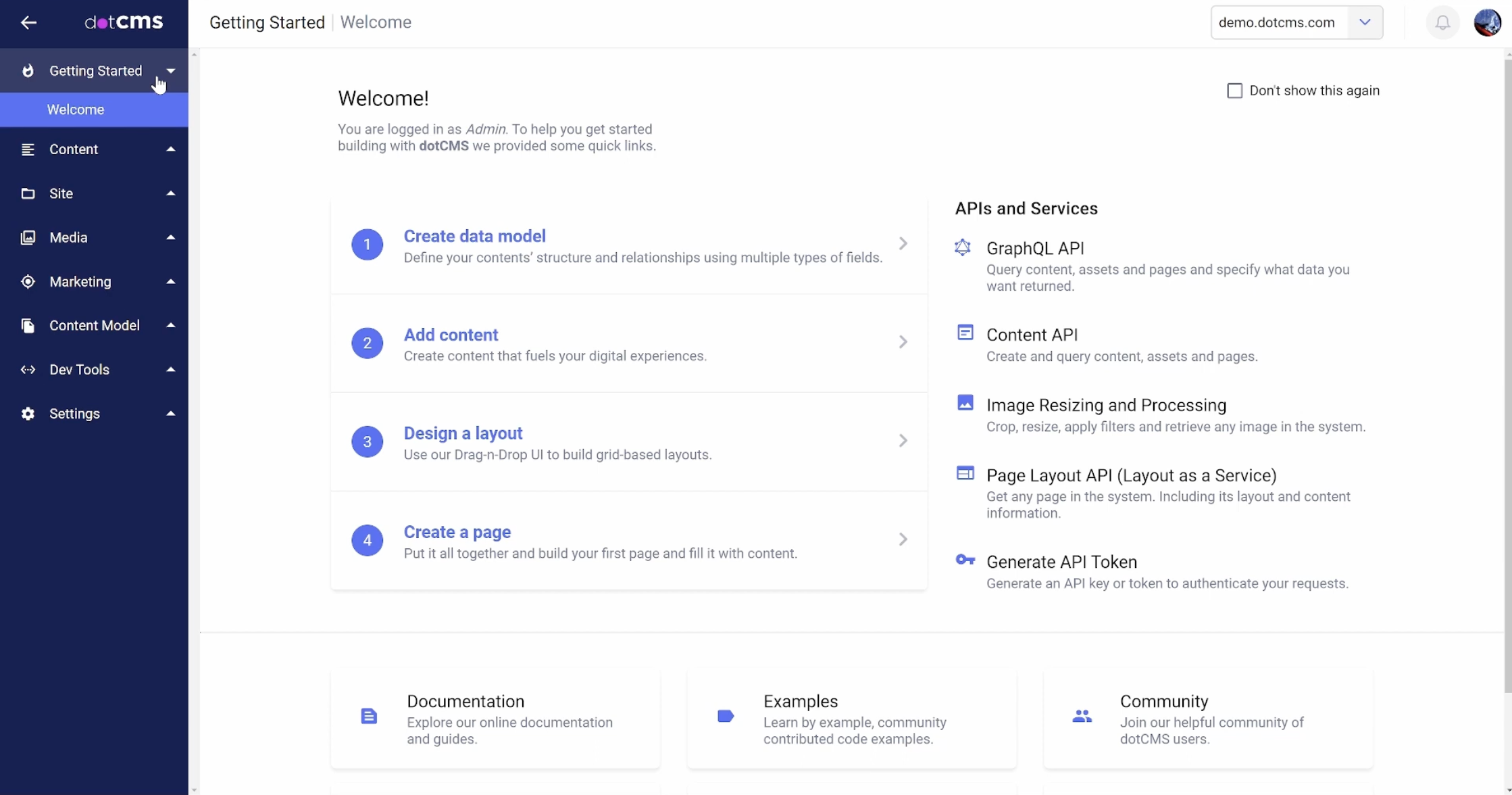
The DotCMS dashboard is a real treasure trove, packed with everything you need right at your fingertips. It's got access to documentation, examples, and even an invite to join the DotCMS user community for that extra bit of support. For the newbies, the 'Getting Started' section is gold, with quick links to key resources and a list of popular APIs and services that you'll likely use in your projects.
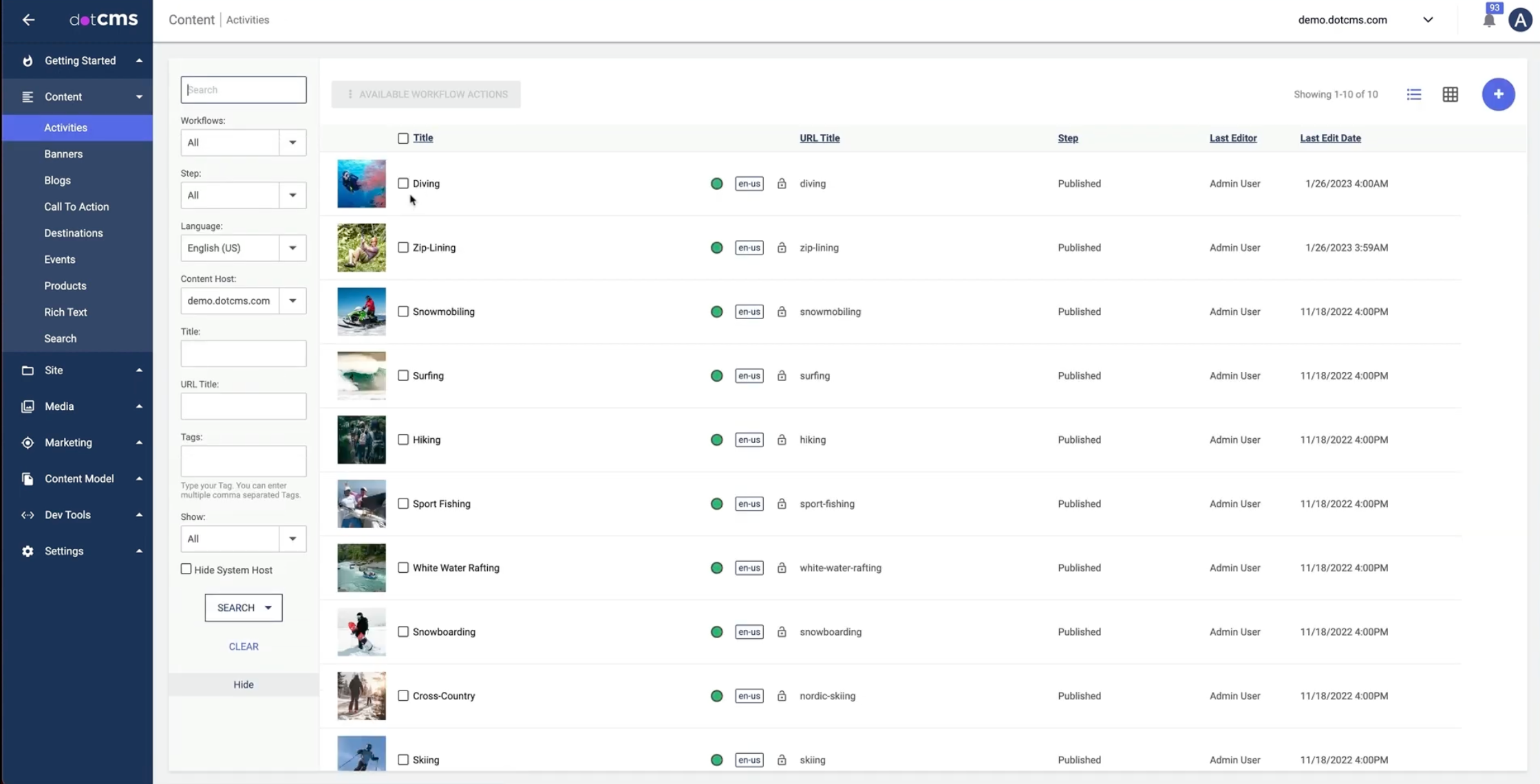
Over in the Content section, DotCMS lays out a full list of all your objects, like pages and files, and specific types such as blog posts and comments. You've got the freedom to define and use a variety of content types as needed. The setup is broken down into three key parts: content types, content type fields, and content items. This structure gives you heaps of flexibility and control over how you manage and show off your content.
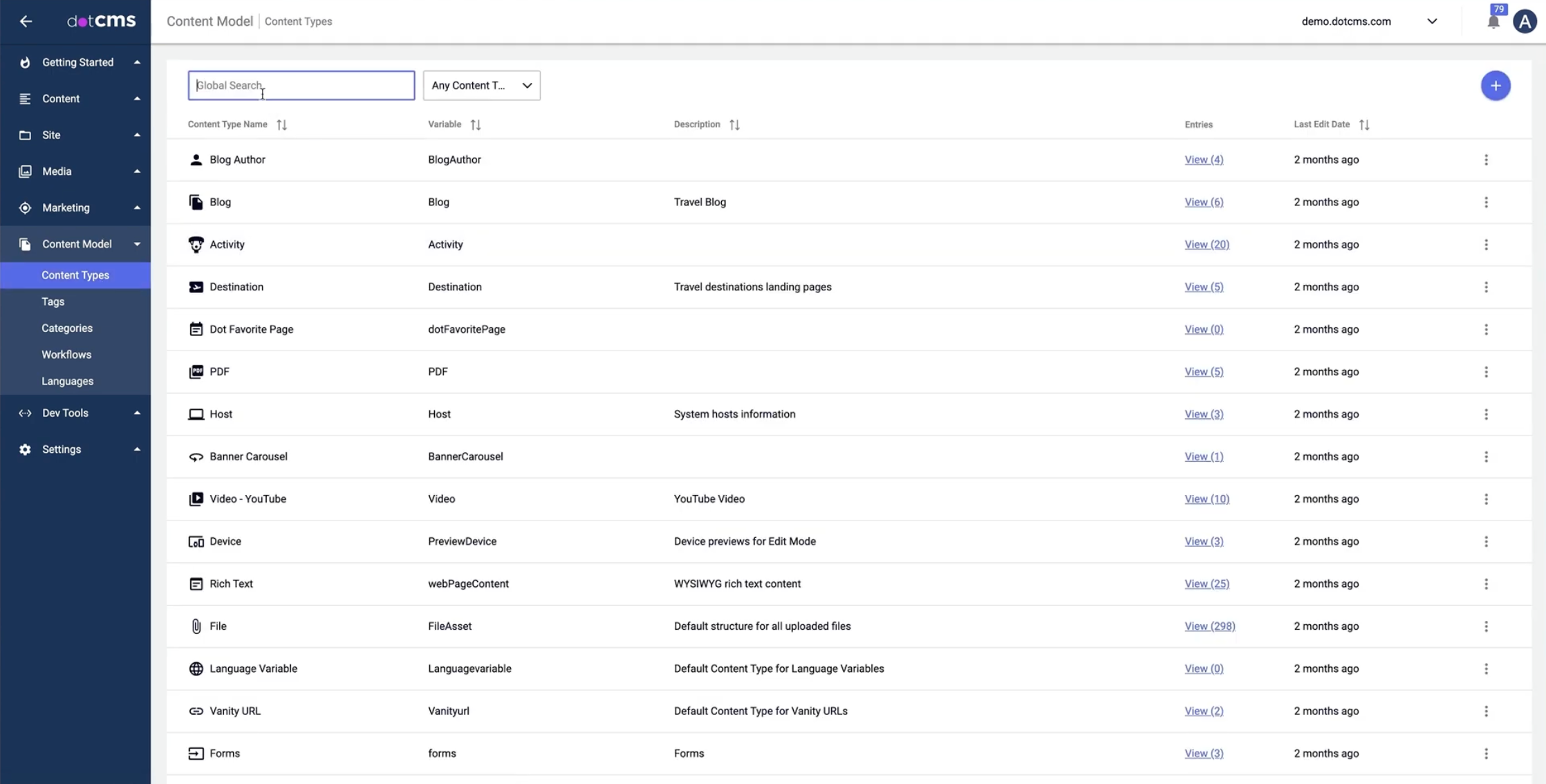
Then there's the Content Model tab. Here, you'll see all the content models you’ve put together. It's not just for editing and checking out details like names, descriptions, and when they were last edited, but also for searching for specific models. Plus, you can add new content models right here. Each content type is shaped by its fields, letting you build structures tailored to your specific needs. And there's more – like tags, categories, workflows, and languages – all adding up to a comprehensive toolkit for managing and organizing your content.
Benefits of dotCMS
- NoCode Tools : Unlike other headless platforms, dotCMS offers NoCode functions, letting non-techy users get stuff done without needing a developer.
- Security : With SOC 2 Type II compliance, it meets high-security standards, crucial for big enterprises.
- Scalability : Its enterprise CDN makes sure content is delivered far and wide, with uptime and support around the clock.
- MACH+ Approach : More than just MACH architecture, dotCMS includes hybrid content management and orchestration, adding flexibility and marketing smarts.
More Key Features of dotCMS
- dotCMS Cloud : Hosted on AWS, this service takes the hassle out of content experience building by handling hosting and related tasks.
- dotCDN : A content delivery network that ensures speedy and secure content delivery worldwide.
- Digital Asset Management (DAM) : Solid image processing and management features.
- Workflows : Advanced NoCode workflows that any team member can customize.
- Multilingual and Localization : Supports content in multiple languages and works with external translation services.
- Multitenancy : Manage lots of sites efficiently from a single spot, saving resources and cash.
Versatility and Integration
As open-source software, dotCMS is free in its community edition, supporting PostgreSQL and MySQL databases. The paid editions offer more database support. It stands out with features like templates, SEO-friendly URLs, mobile compatibility, and clustering.
dotCMS Installations and Publishing
dotCMS can be set up locally or through dotCMS’ managed SaaS cloud, giving you choices for installation. It supports static, dynamic, and hybrid publishing models. Its multi-tenant capabilities let you manage multiple websites within a single system.
Integration Flexibility
With a packed app store and support for the OSGI Java framework, dotCMS offers heaps of integration options. It works seamlessly with digital marketing tools, PIM, DAM, and more. WebHooks let developers tie into the content creation and approval processes.
In a nutshell, dotCMS is a comprehensive and flexible content management solution for the modern digital world. It combines the best of headless and traditional CMS features. Its adaptability, security, and scalability make it a top pick for enterprises keen to boost their digital content strategy.

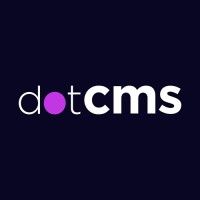
What is dotCMS?
Who Uses dotCMS?
How dotCMS Works
Key Features of dotCMS:
Exploring dotCMS: The Interface and the Experience
Benefits of dotCMS
More Key Features of dotCMS
Versatility and Integration
dotCMS Installations and Publishing
Integration Flexibility






